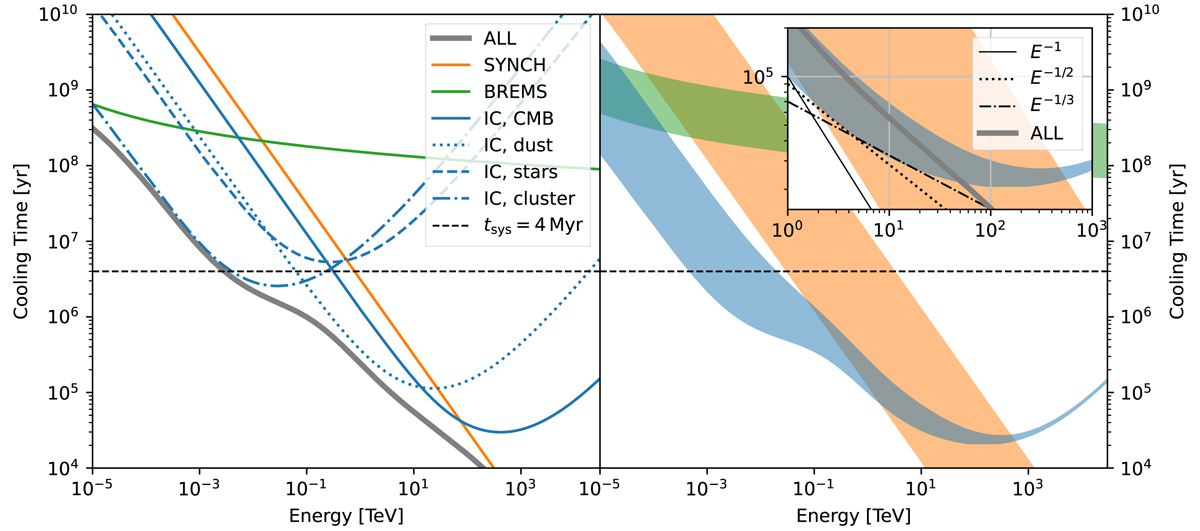Fig. 2.

Download original image
Electron cooling times. Left: default case (see Table 1). The broad grey line is the sum of all the components shown in colour. For a description of the photon fields for IC scattering, see the text. Right: range of plausible cooling times for synchrotron radiation (orange), bremsstrahlung (green), and the sum of all IC components (blue), resulting from a cluster photon field energy density of Ucl = 3 − 180 eV cm−3, a density inside the superbubble of nint = 0.02 − 0.1 cm−3, an effective cluster temperature of Teff = 10 000 − 50 000 K, a magnetic field of B = 1 − 10 μG, and an enhancement of the diffuse stellar and dust emission by a factor 1−3. The enhancement of the diffuse component is motivated by the proximity to the cluster and increased dust density in the region, compared to the standard ISM. The inset shows the behaviour in the TeV-band in more detail, highlighting the loss-time scaling with energy. The default case (broad grey line) shows a behaviour that would require diffusion close to the Kraichnan regime (D ∼ E1/2) to reproduce an energy-independent morphology.
Current usage metrics show cumulative count of Article Views (full-text article views including HTML views, PDF and ePub downloads, according to the available data) and Abstracts Views on Vision4Press platform.
Data correspond to usage on the plateform after 2015. The current usage metrics is available 48-96 hours after online publication and is updated daily on week days.
Initial download of the metrics may take a while.


